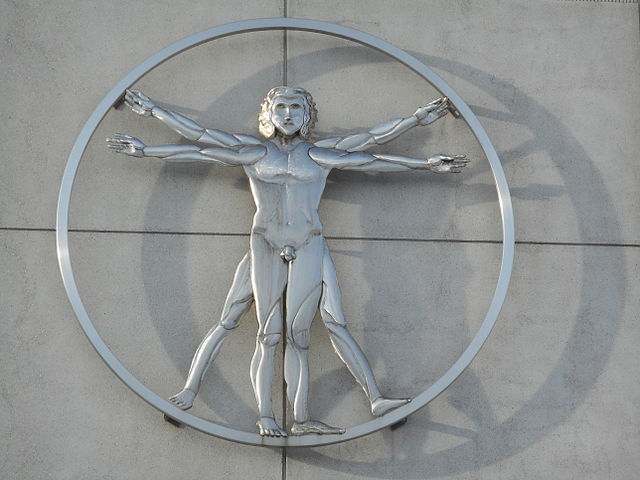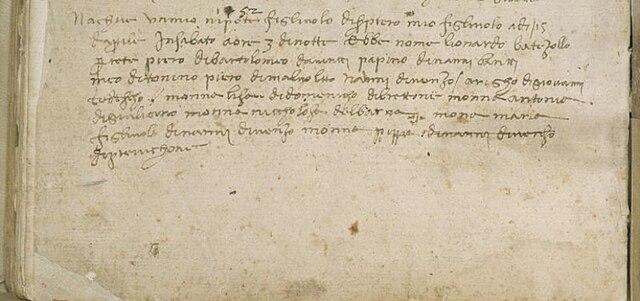Cultural references to Leonardo da Vinci
Leonardo da Vinci was an Italian Renaissance painter and polymath who achieved legendary fame and iconic status within his own lifetime. His renown primarily rests upon his brilliant achievements as a painter, the Mona Lisa and The Last Supper, being two of the most famous artworks ever created, but also upon his diverse skills as a scientist and inventor. He became so highly valued during his lifetime that the King of France bore him home like a trophy of war, supported him in his old age and, according to legend, cradled his head as he died.
Raphael's depiction of Plato in his 1509–1511 fresco The School of Athens in the Vatican is believed to be a portrait of Leonardo da Vinci.
West German stamp commemorating Leonardo's 500th birthday
Leonardo da Vinci medal
Metal Vitruvian Man
Leonardo di ser Piero da Vinci was an Italian polymath of the High Renaissance who was active as a painter, draughtsman, engineer, scientist, theorist, sculptor, and architect. While his fame initially rested on his achievements as a painter, he has also become known for his notebooks, in which he made drawings and notes on a variety of subjects, including anatomy, astronomy, botany, cartography, painting, and paleontology. Leonardo is widely regarded to have been a genius who epitomized the Renaissance humanist ideal, and his collective works comprise a contribution to later generations of artists matched only by that of his younger contemporary Michelangelo.
Leonardo Da Vinci's baptism record
The possible birthplace and childhood home of Leonardo in Anchiano, Vinci, Italy
The Baptism of Christ (1472–1475) by Verrocchio and Leonardo, Uffizi Gallery
Adoration of the Magi c. 1478–1482, Uffizi, Florence








